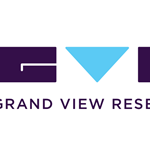The management of pain after surgery sits at the intersection of patient comfort, clinical outcomes and public health policy. The postoperative pain management market is maturing beyond reflexive opioid prescribing toward integrated, evidence-driven pathways that balance efficacy with safety. According to recent industry analysis, global revenues for postoperative pain management drugs are estimated at US$21.94 billion in 2024 and are forecast to rise at a 3.7% CAGR, reaching roughly US$31.66 billion by 2034. Those figures capture an important truth: demand is steady because surgical volumes worldwide are climbing, but the shape of that demand is shifting.
Why this market matters now
Surgeries are more frequent and more complex, and as minimally invasive procedures and ambulatory surgery expand, expectations for rapid recovery grow. Effective postoperative analgesia shortens hospital stays, reduces complications and improves patient satisfaction — but it also must minimize risks associated with opioids, NSAIDs and other agents. The market therefore reflects two parallel imperatives: deliver rapid, reliable pain relief and do so in ways that lower addiction, adverse events, and total cost of care.
Key market dynamics
Several hard trends are shaping growth and product mix. First, opioids remain the largest single drug class, accounting for about US$11 billion of market value in 2024, but their growth is modest (roughly 2.2% CAGR) as stewardship programs and abuse-deterrent strategies moderate use. Second, oral administration dominates from a patient-preference perspective — oral formulations were worth US$8.51 billion in 2024 and are forecast to reach US$12.46 billion by 2034 — driven by the convenience of outpatient recovery and home-based care. Third, distribution is shifting: retail pharmacies accounted for nearly 40% of sales in 2024 as more postoperative care moves out of hospitals.
Clinical practice is evolving toward multimodal analgesia — combining non-opioid analgesics (NSAIDs, acetaminophen), local anesthetics and targeted opioid dosing — and toward procedural approaches such as regional nerve blocks and long-acting local formulations that reduce systemic exposure. Pharmaceutical innovation is responding: companies are developing abuse-resistant opioid formulations, extended-release non-opioid options and single-administration, long-acting analgesics aimed at the immediate postoperative window.
United States and Europe: two leadership stories, different tempos
The United States is the single largest market, valued at about US$7.79 billion in 2024, and is projected to grow at 4.1% CAGR to reach US$11.62 billion by 2034. The US story is one of pipeline innovation and regulatory scrutiny. Drug developers are advancing non-opioid candidates and ultra-sustained analgesics aimed at reducing reliance on short-acting narcotics; early clinical signals of single-administration non-opioid relief have already attracted attention. At the same time, the US faces intense policy focus on opioid stewardship, prescribing limits, and post-discharge surveillance — all factors that shape product uptake and formulary decisions.
Europe offers contrast: innovation and adoption are robust, but decision timelines and reimbursement processes are often more conservative. European clinicians emphasize safety, comparative effectiveness and cost-effectiveness; as a result, products that demonstrate measurable reductions in opioid exposure and readmission risk have an easier path to uptake. Regional differences in formularies and national pain management guidelines create a patchwork of opportunity that global vendors must navigate strategically.
Recent developments to watch
The field is seeing meaningful scientific and commercial advances. Notably, non-opioid, long-duration analgesics have moved from concept to clinical proof-of-concept in several programs; these agents aim to provide meaningful analgesia for days after a single administration. There is also momentum behind novel local anesthetic technologies — extended-release local formulations and implantable depots that deliver prolonged analgesia at the surgical site.
At the same time, technology and care models are shifting. Enhanced Recovery After Surgery (ERAS) protocols, greater use of regional anesthesia, and digital pain-monitoring tools are reducing opioid dependency and improving outcomes. Payors and health systems are increasingly receptive to therapies that shorten length of stay or reduce readmission risk, which alters commercial valuation for novel agents.
Market barriers and risks
The sector is constrained by several structural headwinds. The specter of opioid addiction remains a regulatory and societal force — prescribers are cautious and payors skeptical of expensive new agents without hard outcomes data. Cost and reimbursement uncertainties, especially in public health systems, slow adoption. Safety concerns about NSAID-related bleeding risks or opioid respiratory depression continue to impose clinical limits. And finally, supply-chain and manufacturing complexity for novel formulations can delay commercialization.
Competitive landscape and strategic posture
Major pharmaceutical players and specialty innovators occupy the space: large established names maintain broad portfolios across opioids, NSAIDs and adjunctive therapies, while agile biotechs focus on differentiated, long-acting, non-opioid candidates. Partnerships — between pharma, device makers and hospital systems — are increasingly common because perioperative pain is as much a systems problem as a pharmacologic one. For manufacturers, success demands not only convincing clinical data but also economic evidence that new approaches reduce total cost of care.
Browse Full Report: https://www.factmr.com/report/postoperative-pain-management-market
Editorial view: what the next decade will look like
The market’s roughly 3.7% CAGR masks a more interesting narrative: growth will be concentrated in therapies and delivery systems that demonstrably reduce opioid exposure while preserving or improving analgesia. Products that integrate with ERAS pathways, shorten hospitalization, and support outpatient recovery will command premium positioning. Clinicians will continue to adopt multimodal regimens; hospitals and payors will reward interventions that show both clinical and economic benefit.
For investors and innovators, the sweet spot lies at the convergence of efficacy, safety, and health-economic value. For clinicians and patients, the decade ahead promises better options for managing pain without trading off safety — a fundamental shift from reactionary prescribing toward precision perioperative care.







